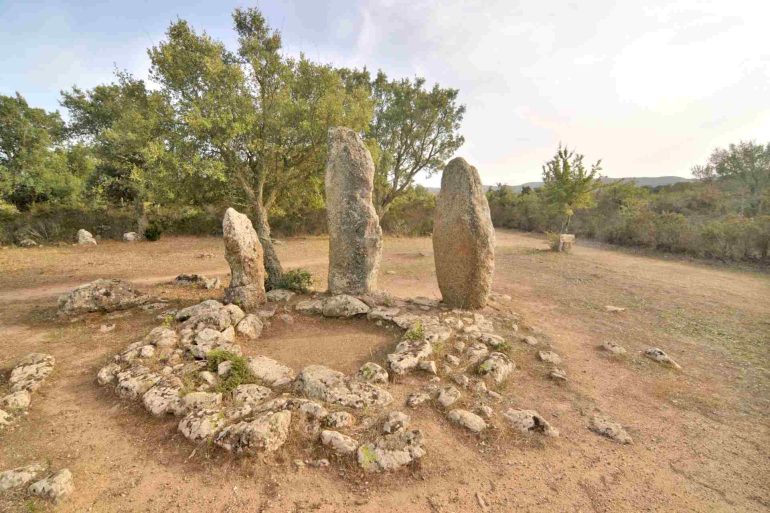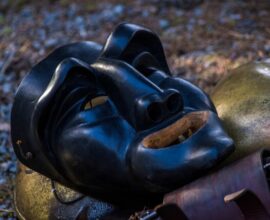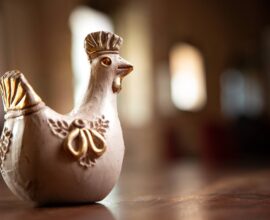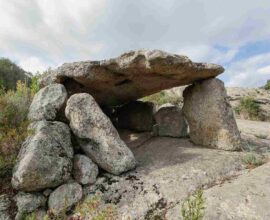Pranu Muttedu Archaeological Park, the Mediterranean Stonehenge
Pranu Muttedu Archaeological Park is a symbol of prehistoric Sardinia
The Pranu Muttedu Archaeological Park is located in the countryside of Gerrei, a region of south-eastern Sardinia, and is one of the most important funerary areas on the island.
The Archaeological Park of Pranu Muttedu is not far from the small picturesque town of Goni, about thirty minutes away from Cagliari. It is one of the most evocative pre-Nuragic sites in Sardinia and stands on an area covered with centuries-old oaks with the typical scents of the Mediterranean scrub.
The park covers about 200,00 square meters and houses 60 menhirs, in pairs, alignments or groups. They are made of local sandstone and are “protoanthropomorphic” with ogival or subogival shape and flat front surface. The complex is second in importance only to Biru ‘e Conca, in the municipality of Sorgono, which has 200 megaliths.
Excavations carried out in the early 1980s by Enrico Atzeni, an archaeologist and professor of paleontology at the University of Cagliari, unearthed numerous artifacts of various types dating from the Recent Neolithic (32000-2800 B.C.) and attributable to the Ozieri culture. At the same time, the numerous domus de janas, along with the menhirs, suggest that the site was used for burial and religious rites related to ancestor worship.
Despite being considered older than the English site, the vast pre-Nuragic monumental complex is nicknamed the “Sardinian Stonehenge.” It is divided into several agglomerations. To the north, in the locality of Su Crancu, stand the reference huts of the necropolis, while to the south of the village are the burial grounds of Pranu Muttedu and Nuraxeddu. These burial grounds are surrounded by dense groups of menhirs — in pairs, in alignment or within the same tombs — and round constructions for probable sacred functions.
Moving southward, on the rock of Genna Accas, is the domus de janas necropolis of the same name with three tomb circles to which are added other particularly interesting structures, such as the remains of the allée couvert dolmen of Baccoi. Typically, the burials consist of two or three concentric rings of stones that occasionally feature an element to support the mound. In contrast, the burial chamber, accessible by a corridor of orthostatic slabs, is built in sub-cyclopic technique.
The inner cells have different shapes. They could be circular or elongated, depending on the burials, and there was no shortage of cists where the deceased was placed, huddled, through a square hatch. In addition, cell roofs were tabular or pseudo-vaulted.
The majestic Tomb II is one of the most important. Entrance, antechamber and burial cell are carved out of two different rock blocks. In addition, the stonework, architecture, and floor plan are reminiscent of domus de janas burials. Excavations at Tomb II unearthed the ancient Ozieri civilization (Final Neolithic, 3200-2800 B.C.) with elements dating back to the Early Chalcolithic (2800-2600 B.C.), such as miniature jars, a spheroid pommel, obsidian arrowheads, a flint stiletto and dagger, a clay plate, a white stone axe, and pieces of a silver necklace.
In the territory of Goni, in addition to the Pranu Muttedu Archaeological Park, there is another remnant of prehistoric Sardinia, namely the Goni Nuraghe. It is a circular single-tower building, about 10 meters in diameter and 8 meters high, overlooking the green valleys of the Gerrei and Lake Mulargia. It is one of the best preserved monotowers on the island. Its structure is made of hewed limestone blocks arranged in regular rows, up to three meters high, which then give way to long, narrow slabs.
The Pranu Muttedu Archaeological Park is not the only example of Sardinia’s vast archaeological heritage worth a visit. There are other must-see places that hold stories, legends and mysteries of ancient Sardinia. For example, the famous Nora and the Archaeological Park of Pula.
How to reach the Pranu Muttedu Archaeological Park?
The Pranu Muttedu Archaeological Park can be easily reached from Cagliari by taking the S.S. 131 Carlo Felice road. At km 21.900 turn right and take S.S. 128 in the direction of Senorbì. Once in Senorbì, exit the built-up area in the direction of Arixi-S. Basilio.
At this point cross first the town of Arixi and then the town of S. Basilio. Then, after about 7 km, at the junction for Goni – Silius, turn left for Goni. About 5 km later, before reaching Goni, the Pranu Muttedu archaeological park is on the left.
The hours to visit the monuments are: from 8:30 AM to 6 PM in winter and from 8:30 AM to 8 PM in summer. The guided tour service is free and available in German, English and French. In addition, there is a picnic area inside the park and a refreshment stand in the rest area, where souvenirs made of cork, pottery or worked stone can be purchased. They are typical of Sardinian culture and are made entirely by hand.
Tickets cost €5.00 for adults, €4.00 for groups of more than 20 people, and €3.00 for students. The ticket office is open until one hour before sunset. For more information email pranumuttedu@tiscali.it, call +39 3802662006, or visit the website www.pranumuttedu.com.
Do you want to visit the Pranu Muttedu Archaeological Park and live a dream vacation in a real paradise? Discover the Forte Village Resort in Sardinia






